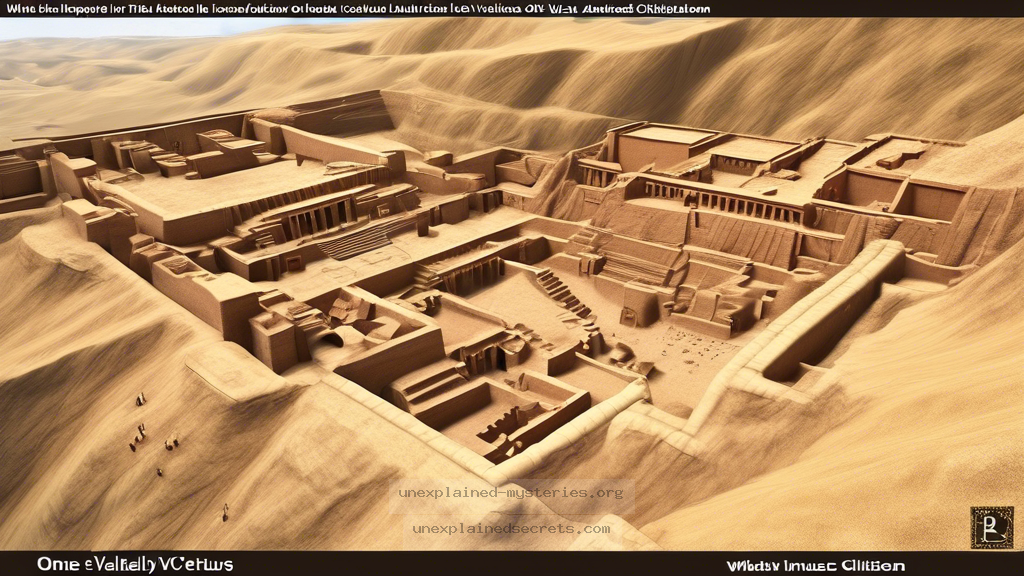What Happened to the Advanced Civilization of the Indus Valley?
What Happened to the Advanced Civilization of the Indus Valley?
The Indus Valley Civilization (IVC), one of the world’s earliest urban cultures, thrived around 2500 BCE in what is now Pakistan and northwest India. Its abrupt decline around 1900 BCE has puzzled historians and archaeologists for decades. This question matters because understanding the fate of the IVC can shed light on the complexities of ancient societies, including their advancements, trade networks, and environmental challenges. What led to the disappearance of a civilization that boasted sophisticated urban planning, a writing system, and advanced metallurgy? Let’s delve into the intricacies of this fascinating mystery.
Historical Context of the Indus Valley Civilization
The Indus Valley Civilization is remarkable for its well-planned cities, such as Harappa and Mohenjo-Daro, featuring grid layouts, drainage systems, and standardized baked bricks. It flourished during the height of the Bronze Age, showcasing advanced agricultural practices, trade networks extending to Mesopotamia, and a unique script that remains undeciphered to this day. The civilization reached its peak around 2500 BCE, with an estimated population of over five million people. This period was characterized by a high degree of urbanization and social organization, indicating a complex societal structure.
Core Concepts Surrounding the Decline
Several theories have been proposed to explain the decline of the Indus Valley Civilization. These include environmental changes, economic factors, and sociopolitical upheaval. One prevailing idea suggests that a significant shift in climate, possibly leading to drought, severely impacted agricultural productivity. The Indus River, which was crucial for irrigation, may have changed its course or experienced reduced flow, leading to crop failures and food shortages.
Another theory posits that external invasions, possibly by Indo-Aryan peoples, contributed to the civilization’s collapse. However, evidence for large-scale warfare or invasions remains inconclusive. The interplay of various factors, rather than a single event, likely led to the gradual decline of this advanced society.
Environmental Factors: Drought and River Changes
Research conducted by geologists and archaeologists indicates that the region experienced significant climatic changes around 2000 BCE. Dendrochronology (the study of tree rings) and sediment analysis suggest that a prolonged drought could have occurred, severely affecting the agricultural practices that sustained the population. The shifting monsoon patterns may have reduced the river flow, leading to a decline in agricultural output and subsequent urban decay.
Additionally, studies indicate that the once-reliable Indus River may have shifted its course due to tectonic activity, further complicating access to water resources. These environmental changes could have triggered migration to more fertile areas, leading to the abandonment of urban centers.
Economic Implications of the Decline
The economic structure of the Indus Valley Civilization was heavily reliant on agriculture and trade. As environmental conditions worsened, the economy likely suffered a significant downturn. The decline in agricultural yield would have led to food shortages, impacting trade relationships with neighboring cultures, such as Mesopotamia. The disruption of trade routes could have further exacerbated economic instability, leading to a breakdown in social order.
Sociopolitical Upheaval: Internal Conflicts?
While external invasions are often cited as a potential cause for the decline, internal sociopolitical factors may have played a more significant role. The complexity of the IVC’s societal structure suggests that a centralized authority may have existed, potentially leading to power struggles as resources became scarce. As communities faced food shortages and environmental challenges, social cohesion could have deteriorated, leading to conflict and migration.
Moreover, archaeological evidence reveals signs of urban decay, such as the abandonment of major cities and the decline of craftsmanship. This may indicate that the populace was either fleeing to escape deteriorating conditions or adapting to new ways of life that required fewer resources.
Archaeological Evidence: What the Excavations Reveal
Excavations of Indus Valley sites have uncovered a wealth of artifacts, including tools, pottery, and seals that showcase the civilization’s sophistication. However, evidence relating to the decline is more elusive. Archaeologists have noted a gradual reduction in the quality of artifacts produced over time, suggesting a decline in craftsmanship and economic stability. The abandonment of urban centers also reflects a significant societal shift.
One notable finding is the presence of skeletons buried in mass graves, which some researchers interpret as evidence of social upheaval or even conflict. However, these interpretations are contentious, leading to ongoing debates among scholars regarding the actual causes of the civilization’s decline.
Alternative Perspectives: The Mystery of the Script
Another aspect of the IVC that adds to its mystique is the existence of a unique script that has yet to be deciphered. This script appears on seals and pottery, suggesting that written communication was vital for trade and administration. The inability to understand this script hampers researchers’ efforts to gain insight into the civilization’s political and social structures, further complicating the narrative surrounding its decline.
Some scholars argue that the script may hold keys to understanding the civilization’s fate, while others believe it may never be deciphered. The lack of bilingual inscriptions, like those found in Mesopotamia, complicates efforts to unlock the language’s secrets.
Common Misconceptions and Clarifications
Many misconceptions surround the Indus Valley Civilization, particularly regarding its supposed ‘mysterious’ disappearance. While it is true that the civilization experienced a decline, it is more accurate to describe this process as a gradual transformation rather than a sudden end. The idea of a complete societal collapse is misleading; rather, it appears that many people migrated or adapted to new living conditions.
Furthermore, the misconception that the civilization vanished without a trace is also incorrect. Evidence suggests that aspects of IVC culture persisted in subsequent societies, particularly in the form of agricultural practices and urban planning.
Best Practices for Investigating Lost Civilizations
For those interested in researching lost civilizations like the Indus Valley, a multidisciplinary approach is essential. Combining archaeology, anthropology, geology, and climate science can yield more comprehensive insights. Here are some best practices for investigation:
- Engage with local communities to understand oral histories and traditions.
- Utilize modern technology, such as satellite imagery and ground-penetrating radar, to identify potential excavation sites.
- Collaborate with scholars from various fields to develop a holistic understanding of the civilization.
- Participate in fieldwork to gain firsthand experience of archaeological techniques and methods.
Future Developments and Ongoing Research
The study of the Indus Valley Civilization is far from over. Ongoing excavations and advancements in technology continue to surface new findings. Researchers are increasingly utilizing climate modeling and paleoclimatology to better understand the environmental conditions that may have influenced the civilization’s decline.
Moreover, the quest to decipher the Indus script is ongoing, with new theories and approaches emerging from linguists and cryptographers. As technology improves, the hope is that we may one day unlock the secrets of this enigmatic civilization, providing deeper insights into its complexities and eventual fate.
Conclusion: The Legacy of the Indus Valley Civilization
The fate of the Indus Valley Civilization remains one of history’s most captivating mysteries. While theories abound regarding its decline, it is evident that a combination of environmental, economic, and sociopolitical factors played a role in its transformation. This ancient civilization’s legacy lives on, influencing subsequent cultures and continuing to intrigue scholars and enthusiasts alike. As research progresses, we may uncover more about this remarkable society, enriching our understanding of human history.
Other Articles
Recent Posts
- What Happened to Flight MH370? The Conspiracy Theories That Still Haunt Us
- What Secrets Lurk Within the Walls of the Infamous Trans-Allegheny Lunatic Asylum?
- What Evidence Supports the Existence of Bigfoot in the Pacific Northwest?
- What Happened to the Indus Valley Civilization? Unraveling the Mysteries of Ancient Urban Life
- Can Telepathy Be Scientifically Proven Through Laboratory Evidence?







